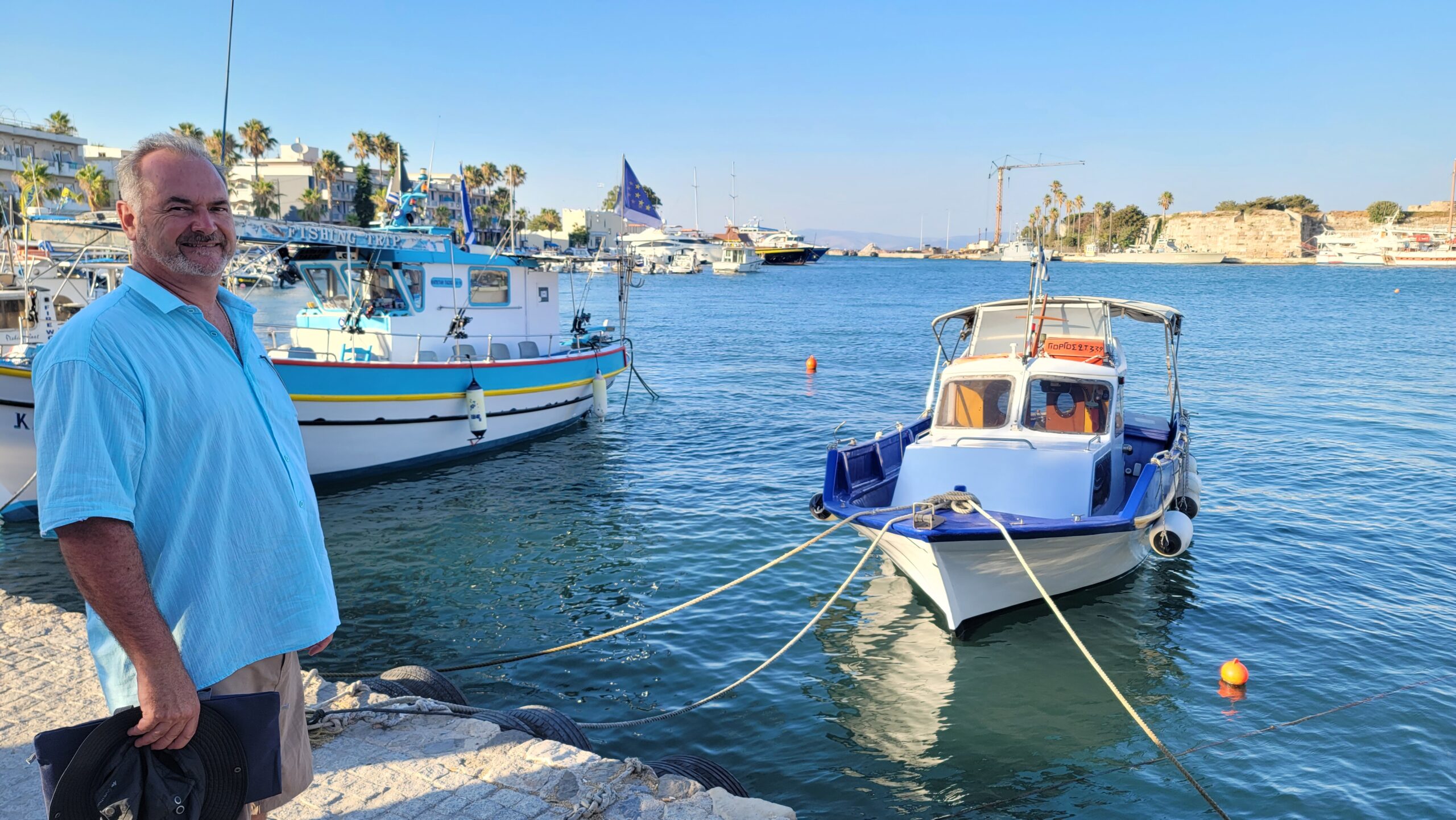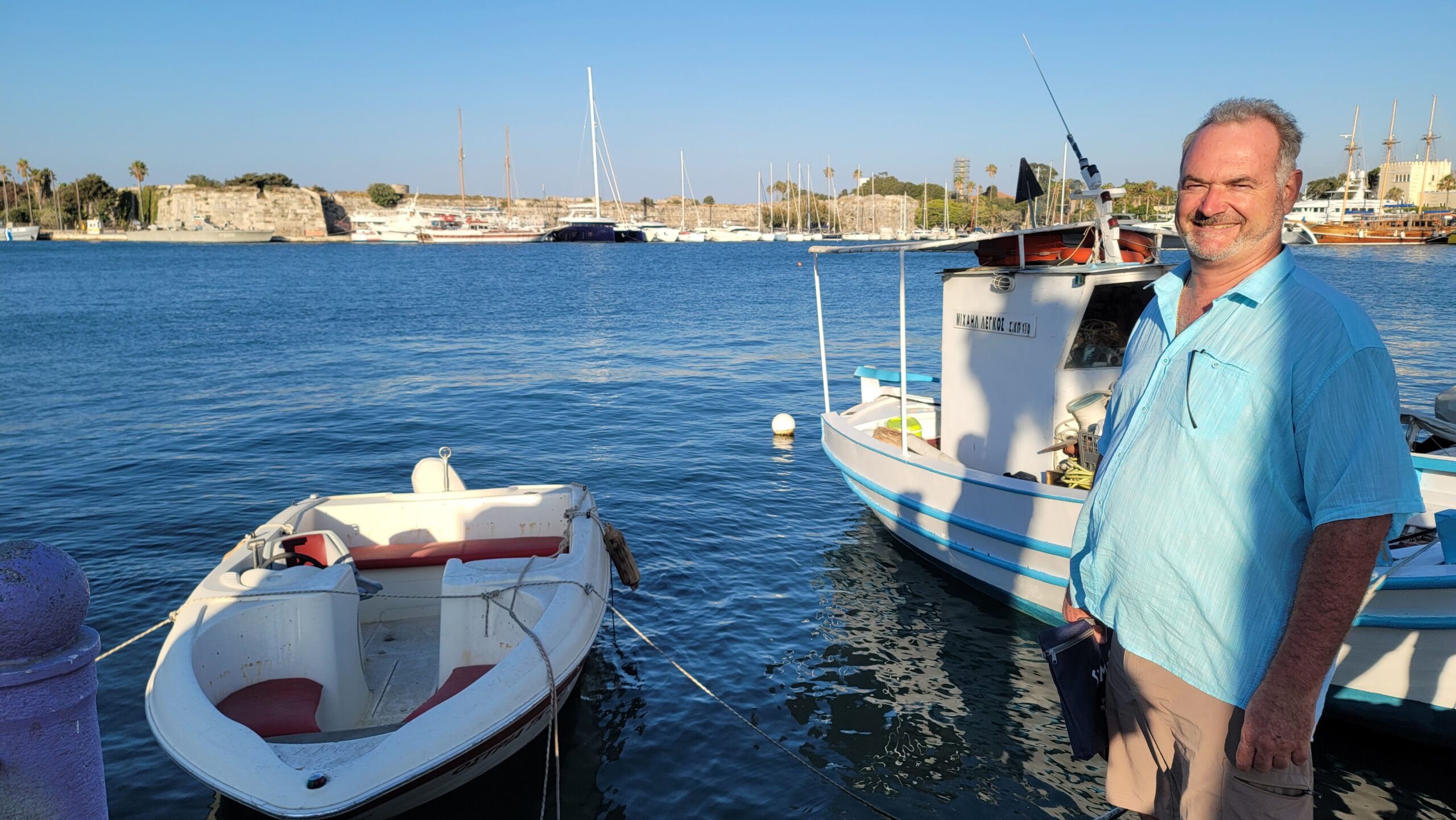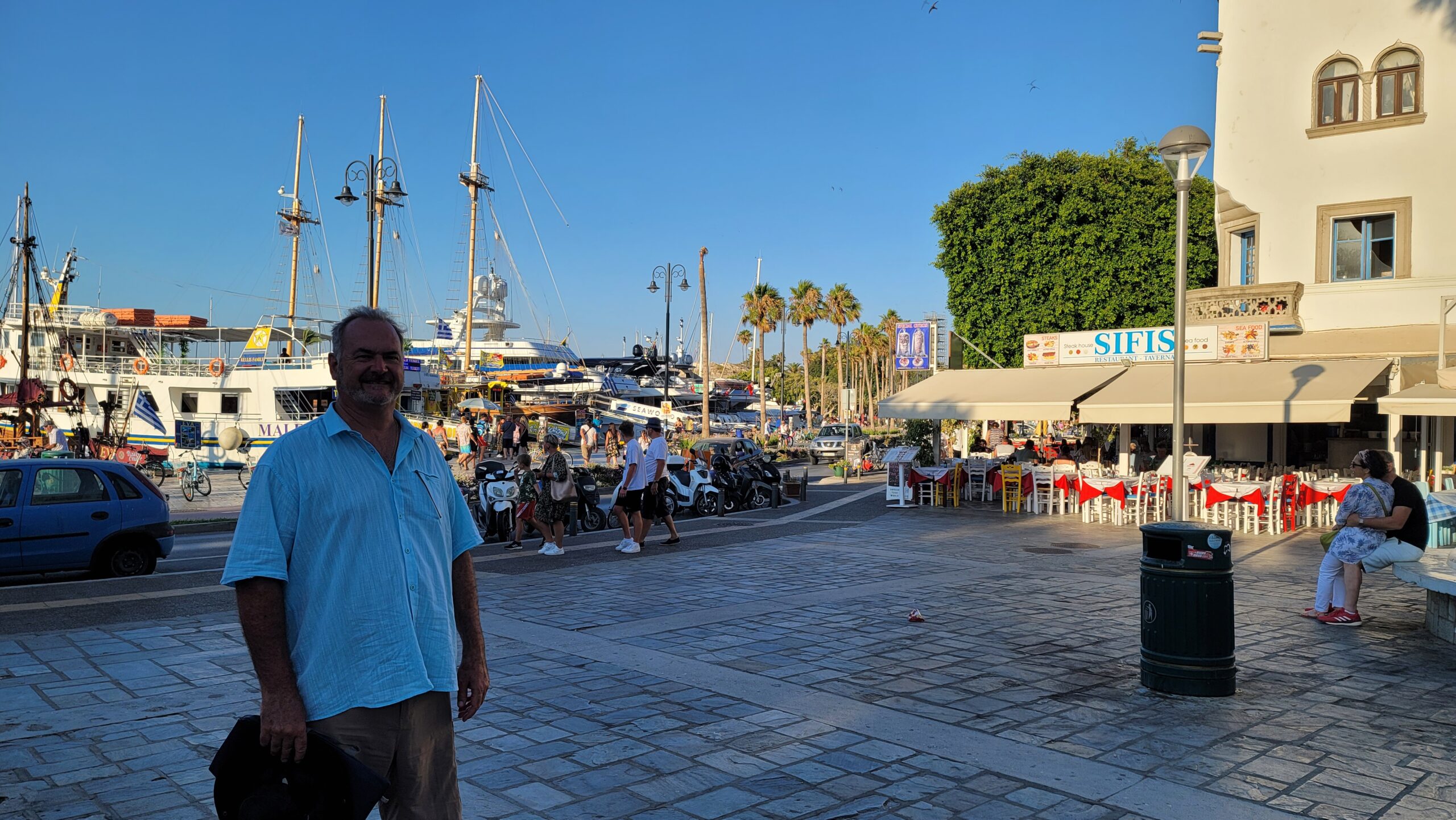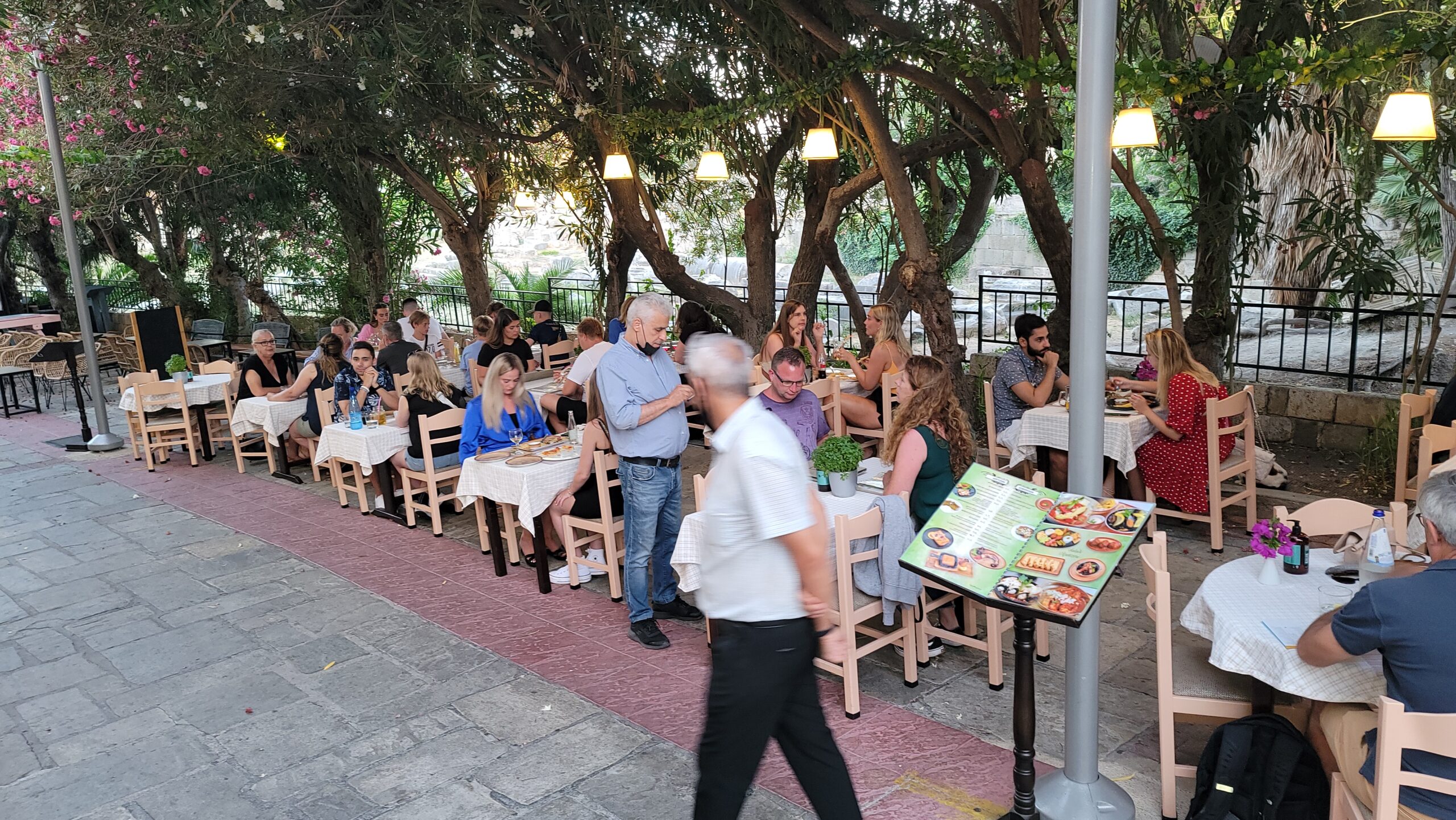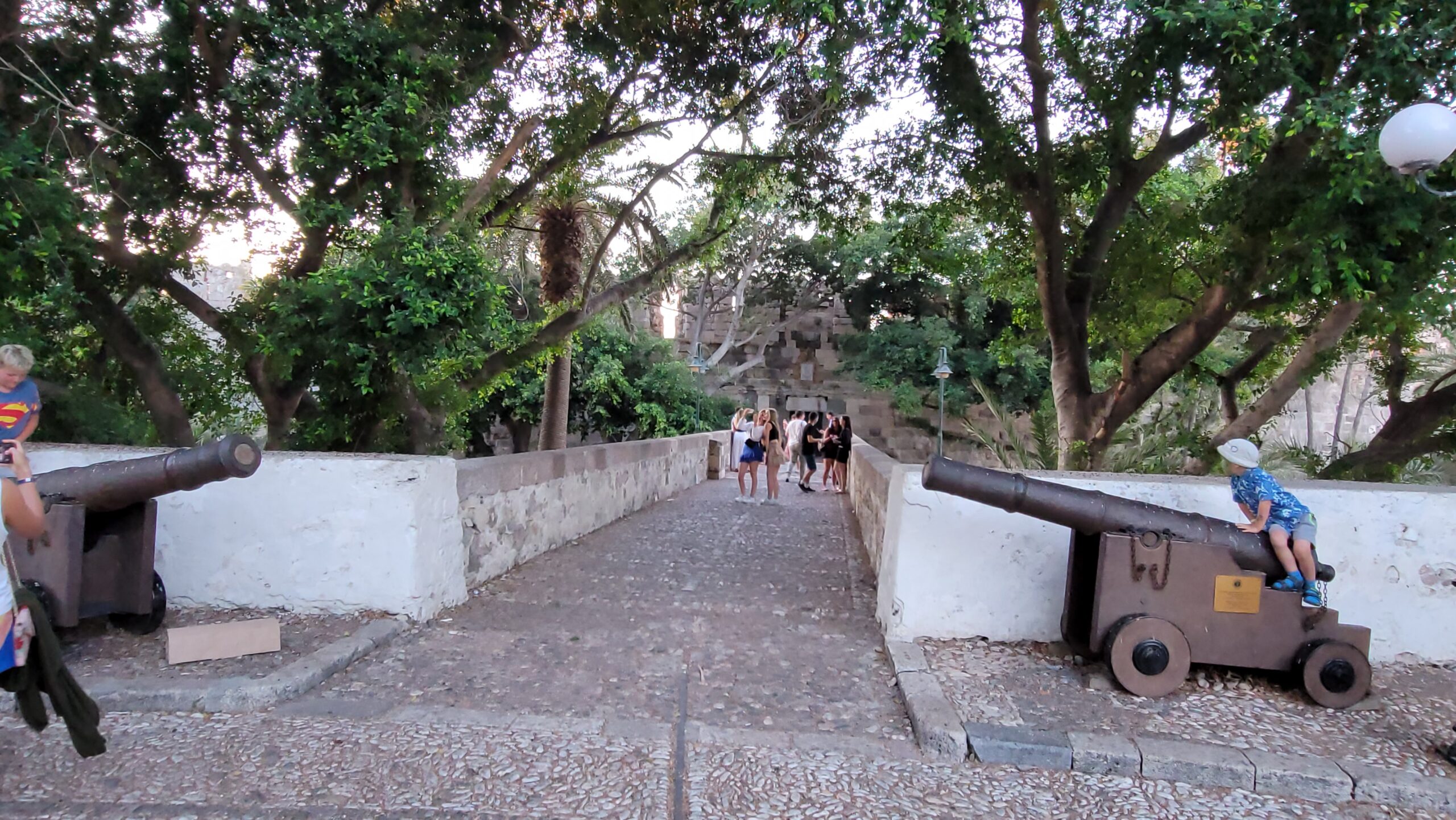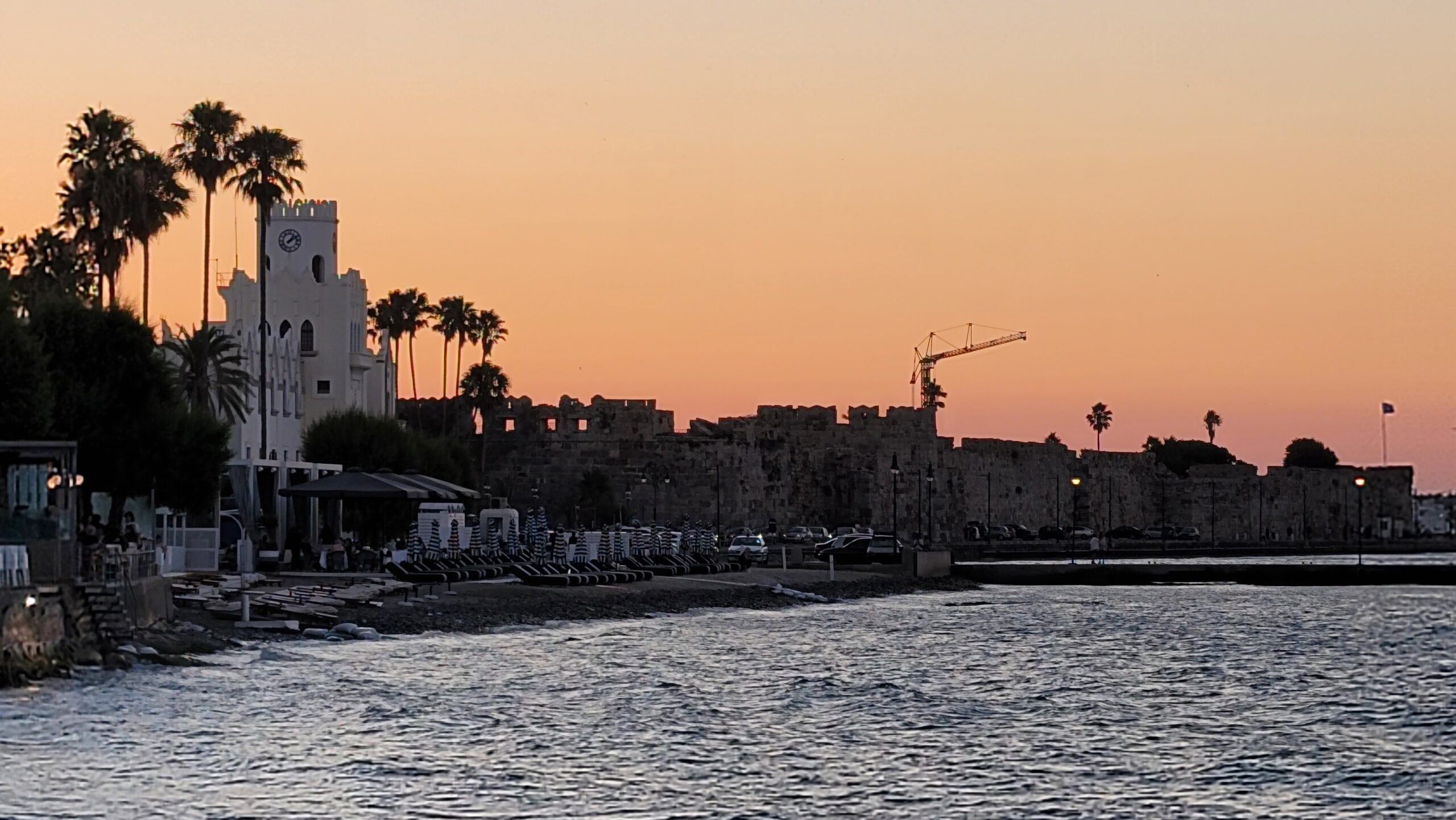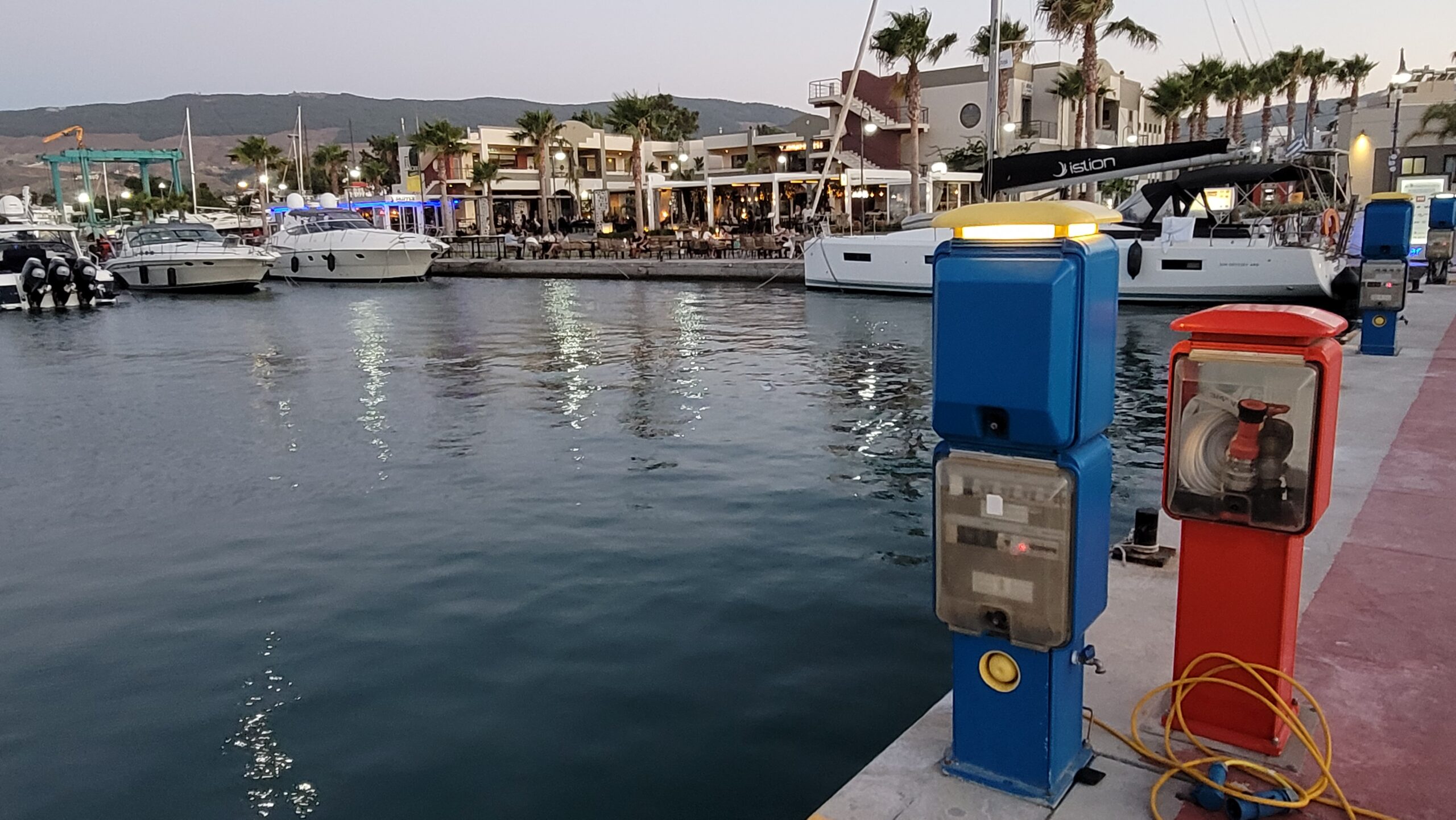There is a huge Meltemi (Greek wind that blows north to south through the Aegean) building that will stop us moving for a week if we don’t head west fast! Arghh.
After getting here we plan to top up diesel as soon as the fuel dock opens then head to Levitha. Luckily I called while I still had cell reception and managed to get one of the few mooring balls there. The anchoring and navigation mast head lights installed in Palmiye do not work properly! The switches are reversed and putting the anchor light on turns on the tri-color nav light. Putting the tri-color nav light turns on the anchor light..
With 100% fuel and 100% water filled up all the family and I had to do was stroll the shady interior and take in the sights, smells and observe the local customs.
Away from the marina, the old port was very busy and quite touristy. It was fun watching the crowds and finding a good restaurant away from them 🙂
Kos was an important maritime power and was founded in 366 BC. A mountain ridge can be seen running the full length of the island and soars to almost a kilometer in height. The eastern side is barren and steep and the western side catches more water and is more fertile because of it. Vegetables, melons and grapes are the main crops grown and the Kos variety of lettuce is the one brought to England and other parts of the world from here.
Kicking back in Kos
Kos was transferred to the Kingdom of Italy in 1912 after the Italo-Turkish War. The Italians developed the infrastructures of the island, after the ruinous earthquake of 23 April 1933, which destroyed a great part of the old city and damaged many new buildings. Architect Rodolfo Petracco drew up the new city plan, transforming the old quarters into an archaeological park, and dividing the new city into a residential, an administrative, and a commercial area., In World War II, the island, as Italian possession, was part of the Axis. It was controlled by Italian troops until the Italian surrender in 1943. On that occasion, 100 Italian officers who had refused to join the Germans were executed in what became known as the Massacre of Kos. British and German forces then clashed for control of the island in the Battle of Kos as part of the Dodecanese Campaign, in which the Germans were victorious. German troops occupied the island until 1945, when it became a protectorate of the United Kingdom, which ceded it to Greece in 1947 following the Paris peace treaty.

